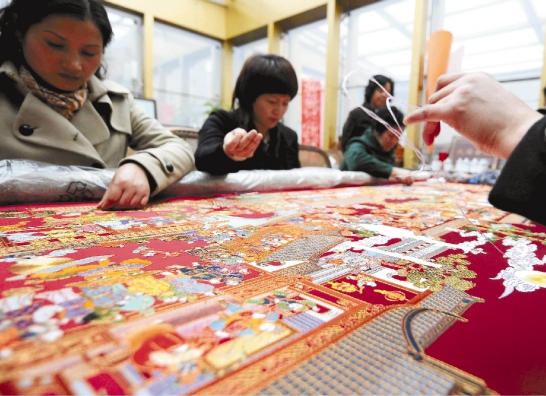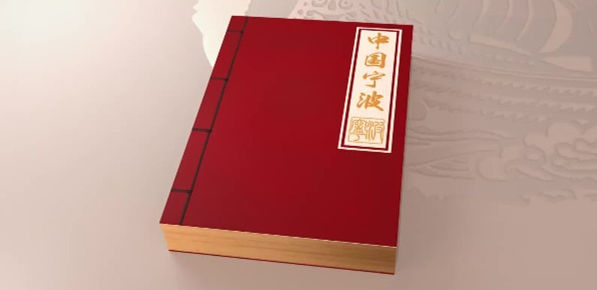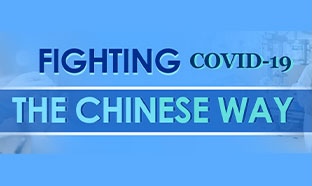Ningbo Embroidery

Ningbo Embroidery [Photo/nbwh.gov.cn]
Ningbo embroidery is a traditional art with a long history. In the Ming (AD 1368-1644) and Qing (AD 1644-1911) dynasties, the market for Ningbo embroidered fabric was greatly developed. Embroidery products were sold to cities and regions throughout Southeast Asia. From that time, Ningbo embroidery has enjoyed the same popularity with Suzhou embroidery, Hunan embroidery and Sichuan embroidery.
Ningbo embroidery has a unique local style with the general composition of pictures and beautiful colors including black, cyan, and celadon. There are many different stitching patterns such as petit point, fibula, and silk noil yarn. The patterns are mostly based on traditional pictures such as Dragon and Phoenix or Peony and Birds. With those beautiful patterns, the embroidery has a flavor of antiquity and elegancy.
Zhao Puchu, a former President of the Buddhist Association of China, highly appreciated Ningbo embroidery when he visited the city.
In recent years, Ningbo embroidery artists studied advanced foreign methods and have developed the traditional craft, making the art more brilliant.
The large tapestry of Ningbo embroidery, named Hundreds of Cranes in Morning Sun, won the Hundred Flowers Award for arts and crafts in 1989 and was purchased by the China Art Gallery.



 Print
Print Mail
Mail
